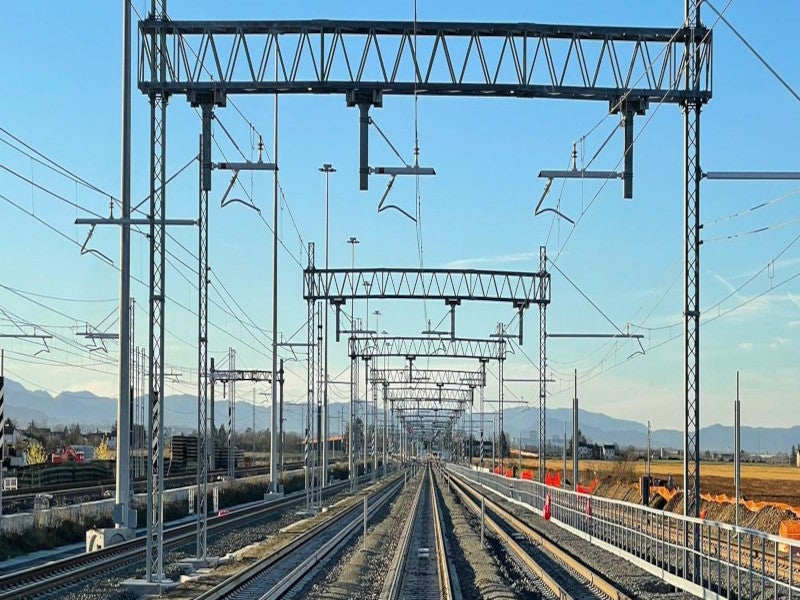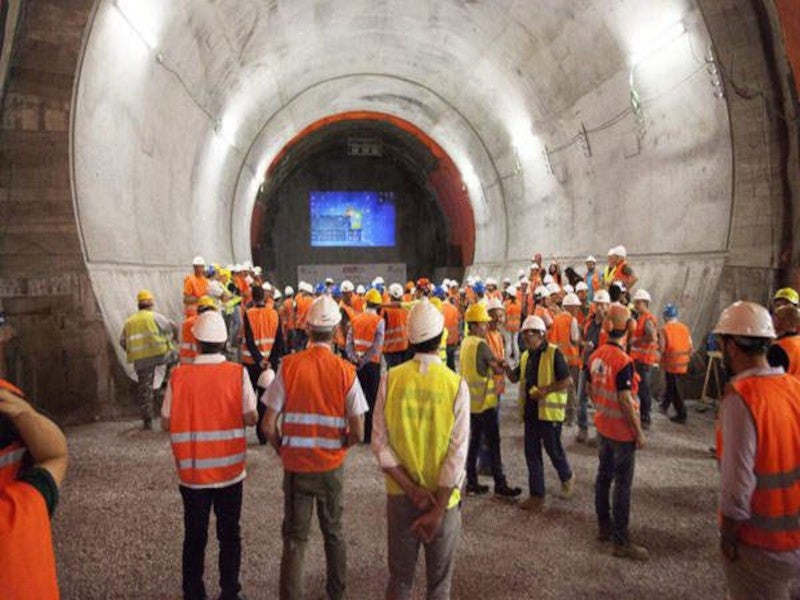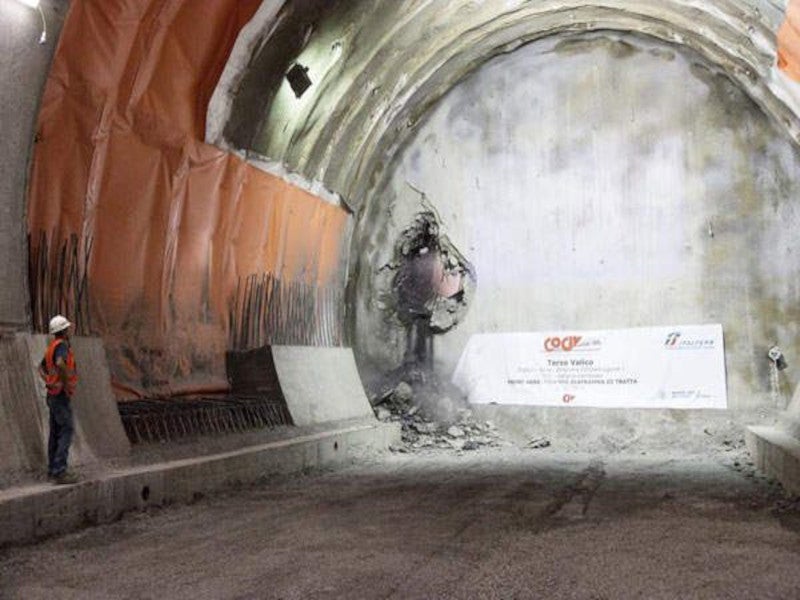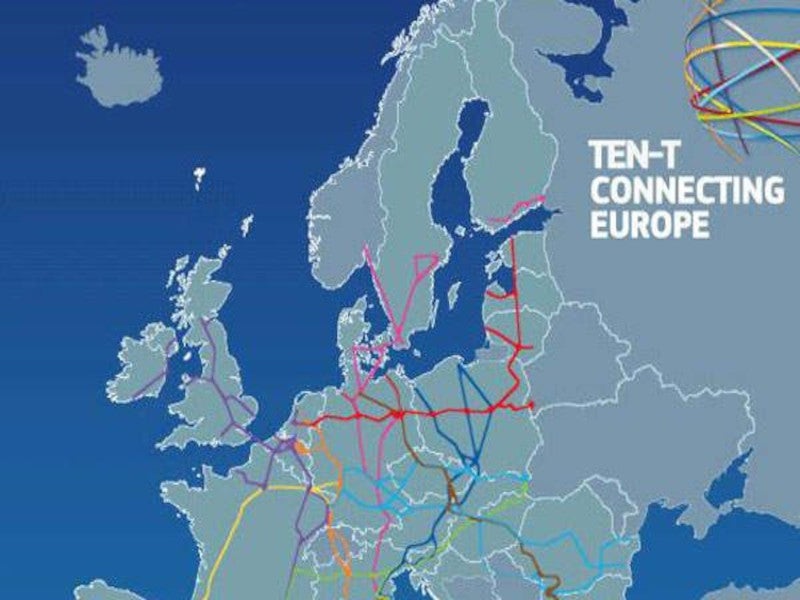The Genoa-Milan high-speed/high-capacity railway line, also known as Terzo Valico dei Giovi (Terzo Valico), is being constructed to enhance the efficiency of freight and passenger transport between Genoa and Milan, Italy.
The project forms part of the Rhine-Alpine Corridor, one of the corridors of the larger trans-European transport network (TEN-T core network), which connects Europe’s most populated and influential industrial regions.
The Terzo Valico (Third Pass) project is being carried out for the Italian railway company Rete Ferroviaria Italiana (RFI) by the Cociv Consortium, led by the Webuild Group. Italferr, an engineering consultancy branch of the Italian state railways, is supervising the project.
The final design works for the project started in September 2003 and construction works started in April 2012.
The first 8.5km of the new railway line of the Third Giovi Pass – Genoa Junction between Rivalta Scrivia and Tortona stations was activated in December 2023 and inaugurated in January 2024, allowing the return of regional trains between Tortona and Novi Ligure.
Six Trenord regional trains run between Tortona and Novi Ligure, and along the Milan-Novi Ligure/Arquata Scrivia line, stopping at Pozzolo Formigaro. This marks the recommencement of passenger service and the reactivation of commercial service provided by regional trains on the Arquata Scrivia–Novi Ligure–Milan line.
The construction work is expected to be completed between December 2024 and June 2025 while the railway line activation is scheduled for March 2026.
Genoa-Milan high-speed railway line project details
The new railway line will be 53km long, of which 37km will comprise tunnels. It will traverse 14 municipalities in the provinces of Genoa and Alessandria, and the regions of Liguria and Piedmont.
The railway line will be linked to the existing lines at four connection points, the Voltri interconnection, Genoa (Bivio Fegino), Novi Ligure, and Tortona. The line’s interconnections will be approximately 23km long.
The southern section of the line will have interconnections at Voltri and the Bivio Fegino, connecting with the railway facilities in Genoa. The northern section, with a main intersection at Novi Ligure, will connect with the existing Genoa-Torino line for traffic in the direction of Turin and Novara-Simplon, and the Tortona-Piacenza line for traffic in the direction of Milan San Gottardo.
The section of the line stretching between Genoa (Bivio Fegino) and the Plain of Novi will primarily comprise tunnels, except for a short stretch in the open at Libarna. The line unfurls within three natural tunnels (Galleria di Valico, Galleria Serravalle, and Galleria Campasso) and runs out in the open to the artificial 198km long tunnel of Pozzolo before joining the existing Pozzolo–Tortona line.
Most sections in the tunnel are constructed in two single-track tunnels side-by-side and joined by cross-connections every 500m, each serving as a safety tunnel for the other.
The new line will enable trains to reach speeds of up to 250km/h, whereas the designed maximum speed limit on the intersections will be between 100km/h and 160km/h. The maximum design grade of the line and the intersections will be 12.5%.
The line will be equipped with Level 2 European Railway Traffic Management System / European Train Control System (ERTMS/ETCS) and electrified with 3kV DC and 25kV AC wiring.
The project also involves the upgrade and construction of 30km of roads to complement the construction activities and ease the traffic during the construction phase.
Genoa-Milan high-speed line construction details
The construction works are divided into six lots.
The excavation works for the Campasso tunnel, performed as part of Lot 1, were completed in July 2015. The 710m-long tunnel, located within the City of Genoa, will connect the new Terzo Valico with the existing Succursale dei Giovi (Genoa-Milan-Turin route) line.
The 27km-long main Valico tunnel is being constructed under Lot 2 while Lot 3 entails the construction of the 709 km-long Serravalle tunnel. The tunnels are designed to be adjacent, single-track tunnels adjoined by cross-connections.
Genoa Junction details
The Genoa Junction is a part of the larger Terzo Valico project under the “One Project” concept, which enhances and upgrades the rail infrastructure in the Genoa area to effectively connect the new Terzo Valico line with the existing rail network.
The Terzo Valico dei Giovi – Genoa Junction project will initially connect Genoa with Milan, and subsequently integrate into the European TEN-T network, extending up to Rotterdam.
Financing for the Italian high-speed rail project
The project is completely financed by the RFI of the Ferrovie dello Stato Group. Construction of Lot 1 is expected to cost €430m ($478m).
Project financing amounting to €500m ($556m) for Lot 1 is being provided by Comitato interministeriale per la programmazione economica (Interministerial Committee for Economic Planning – CIPE).
Lot 3 is estimated to cost €607m (approximately $675m) and achieved financial closure in January 2015.
Contractors involved
Maccaferri, a civil, geotechnical, and environmental engineering company, provides excavation consolidation and reinforcement support for the project using its proprietary B.Zero Tondo(TM) Tunnel Support System, GFRP Bar and Stirrups.
VDP, an engineering company, provided environmental impact assessment (EIA) and landscape studies services.
The Saturno Consortium, comprising Hitachi Rail, Alstom Ferroviaria, Colas Rail Italia, and Mermec STE, has completed technological interface works, commissioning two advanced rail traffic management apparatuses at Rivalta Scrivia station and near the renovated Bivio Tortona railway junction. The line was equipped with Hitachi Rail’s advanced digital signalling systems.
Hitachi Rail is a transport solutions provider, Colas Rail is a railway infrastructure and rail freight company while Alstom Ferroviaria is the Italian division of locomotives company Alstom and Mermec STE is a signal solutions and technologies provider.
The high-precision surveying for the project was carried out using DMT’s GYROMAT 5000 surveying gyroscope.
Terzo Valico Project benefits
The project will strengthen the connections of the Ligurian port system with the rest of Northern Italy and Europe “Area Banana Blu”.
It will redirect the freight traffic from road to rail, bringing about environmental, safety and economic benefits, resulting in a 55% reduction in energy use and CO₂ emissions and will reduce travel times by 33% between Genoa, Milan and Turin.
The project generated approximately 5,000 jobs during the peak construction phase.
In addition, the project will also shorten the journey time for cargo traffic from the Far East in the Mediterranean by choosing the Ligurian bay ports and the northern Tyrrhenian Sea ports, to the North Sea ports.






